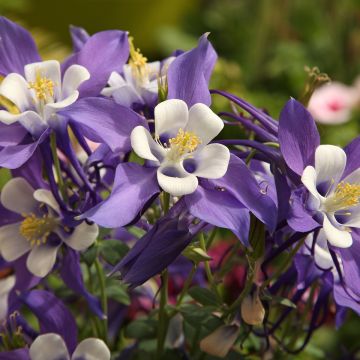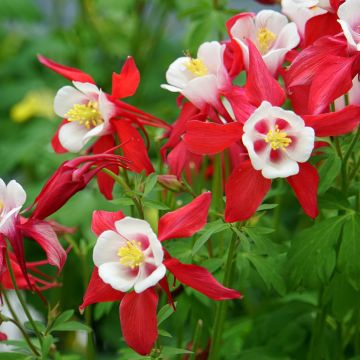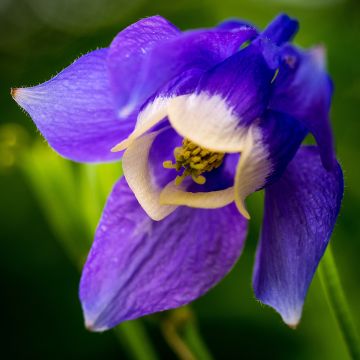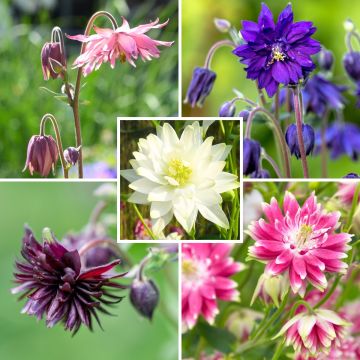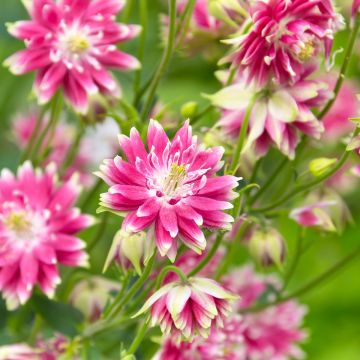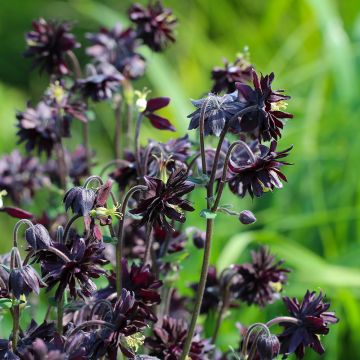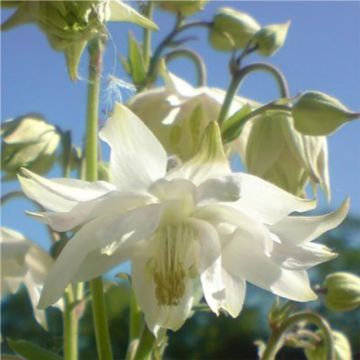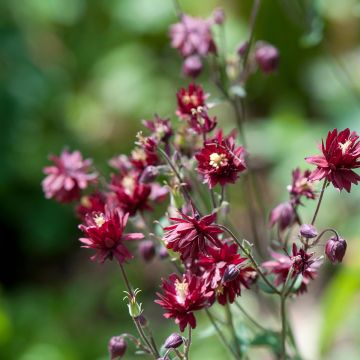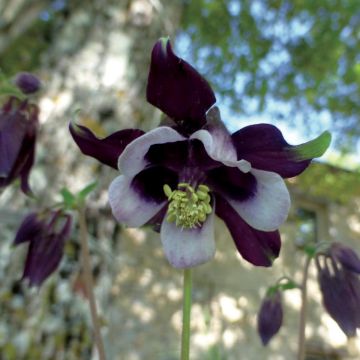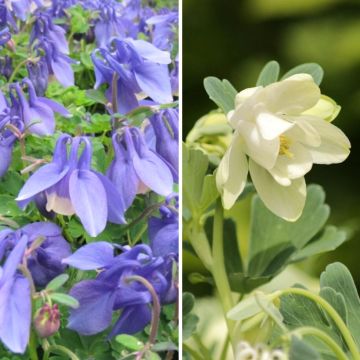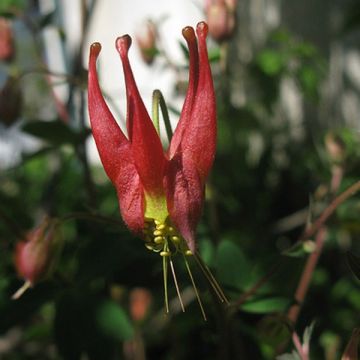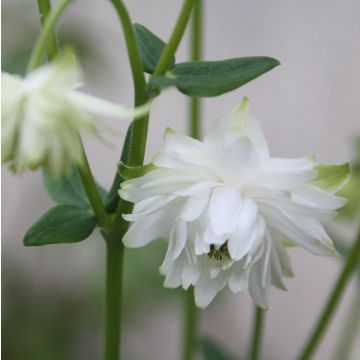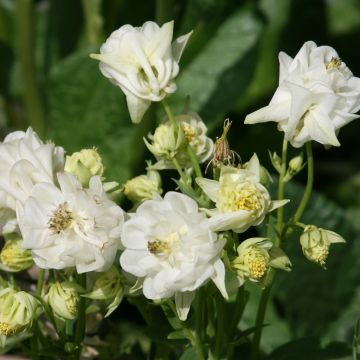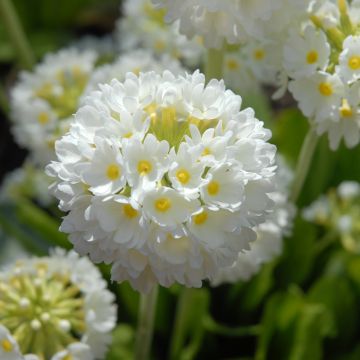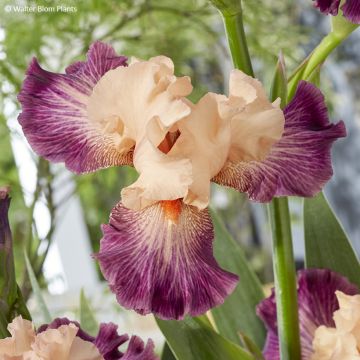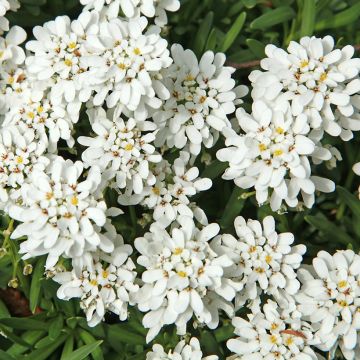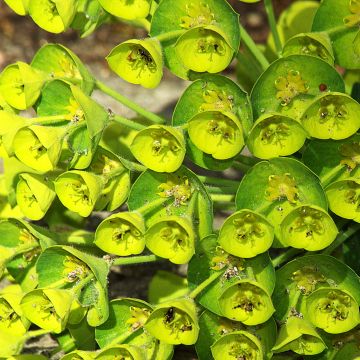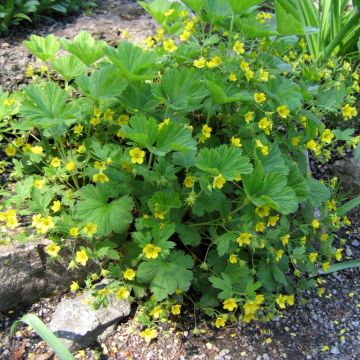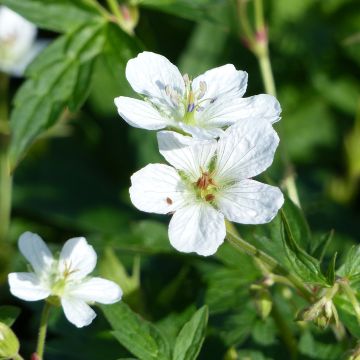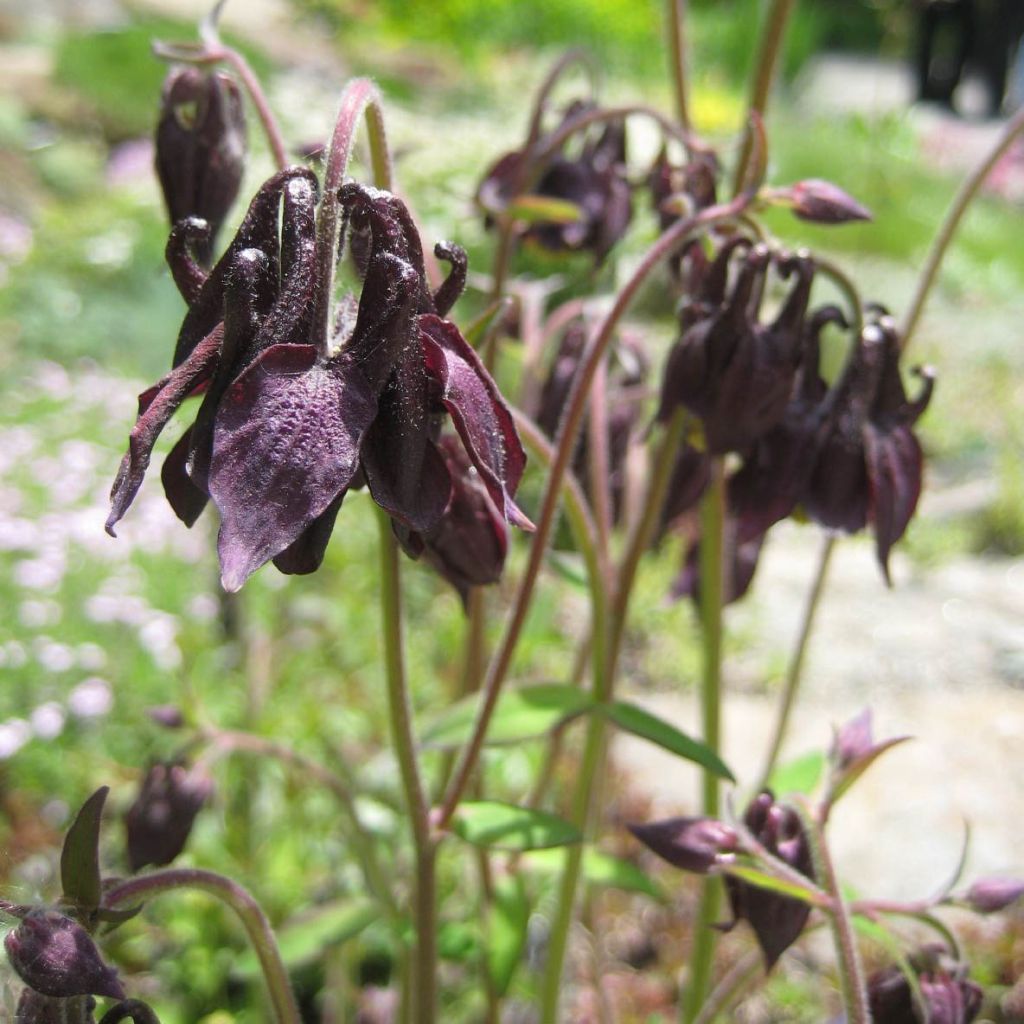

Aquilegia viridiflora Chocolate Soldier - Columbine
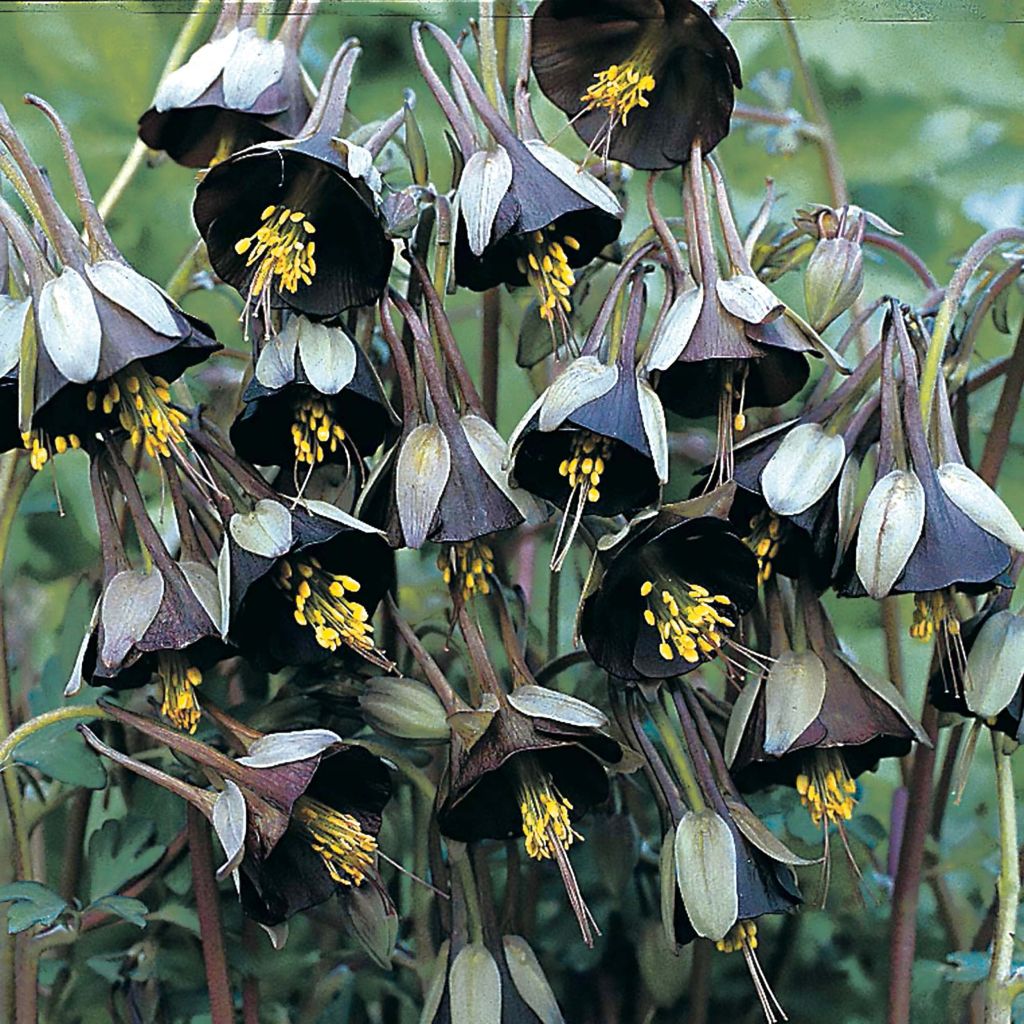

Aquilegia viridiflora Chocolate Soldier - Columbine
Aquilegia viridiflora Chocolate Soldier - Columbine
Aquilegia viridiflora Chocolate Soldier
Green-flowered Columbine
Purchased in 2019, I thought I would lose it in 2020 and this year it's starting to bloom, but the blossoms are very small.
Sophie, 22/04/2021
Special offer!
Receive a €20 voucher for any order over €90 (excluding delivery costs, credit notes, and plastic-free options)!
1- Add your favorite plants to your cart.
2- Once you have reached €90, confirm your order (you can even choose the delivery date!).
3- As soon as your order is shipped, you will receive an email containing your voucher code, valid for 3 months (90 days).
Your voucher is unique and can only be used once, for any order with a minimum value of €20, excluding delivery costs.
Can be combined with other current offers, non-divisible and non-refundable.
Why not try an alternative variety in stock?
View all →This plant carries a 12 months recovery warranty
More information
We guarantee the quality of our plants for a full growing cycle, and will replace at our expense any plant that fails to recover under normal climatic and planting conditions.
Would this plant suit my garden?
Set up your Plantfit profile →
Description
The 'Chocolate Soldier' Aquilegia viridiflora is a lovely selection of the Green Columbine, whose flowers are strongly tinged with brown-violet and purple. It is a small, short plant with a strong presence in spring: its clusters of pendulous flowers, in a dark, unusual colour diffuse a pleasant fragrance in partial shade. When it is happy, in well-drained soil that doesn't dry out, this collectible columbine requires no special care and easily naturalizes in rockeries and borders.
Aquilegia viridiflora, like all columbines, belongs to the Ranunculaceae family. It is native to China, Japan, and Siberia. It can be found in forests, on grassy slopes, in valleys, along riverbanks, and in wet areas. The 'Chocolate Soldier' cultivar stands out with its colourful brown flowers.
It is a very hardy, leafy herbaceous perennial, forming an upright clump, 30 cm (12in) tall and 20 cm (8in) wide producing long flower stalks that branch upwards. The fragrant flowering occurs from April to June in the form of pendulous flowers, 2 cm (1in) long, bicoloured, with chocolate-coloured petals surrounded by yellow-green sepals and topped with a short, brown-violet spur. Long stamens protrude from the corolla, displaying anthers covered in yellow pollen. The flowers are grouped in clusters of 3 to 7 units. This variety readily self-seeds, but not always faithfully.
The foliage and above-ground vegetation disappear in winter, sometimes as early as mid-summer if the soil does not remain moist and the plant has produced seeds. The beautifully cut basal leaves (biternate) are a lovely bluish-green, giving a sense of lightness.
Columbines were cultivated in flowerbeds in The Middle Ages, and cottage gardens have perpetuated the tradition. Compact and unassuming, they are essential in mixed borders, where they will bring lightness and charm. They can be planted in many different areas of the garden, taking care to leave a 20 cm (8in) space around each plant: in the middle of a perennial bed, in a border, at the base of bushes, along woodland edges or on a slope. They will be magnificent when planted in groups to create a beautiful dense clump. Pick them when they are just opening for stunning country bouquets. In a moist, semi-shaded rockery or light woodland, 'Chocolate Soldier' can be paired with perennials that appreciate similar environments, such as Foxgloves, smaller-sized ferns, Bleeding Hearts, or Corydalis, for example.
Report an error about the product description
Aquilegia viridiflora Chocolate Soldier - Columbine in pictures
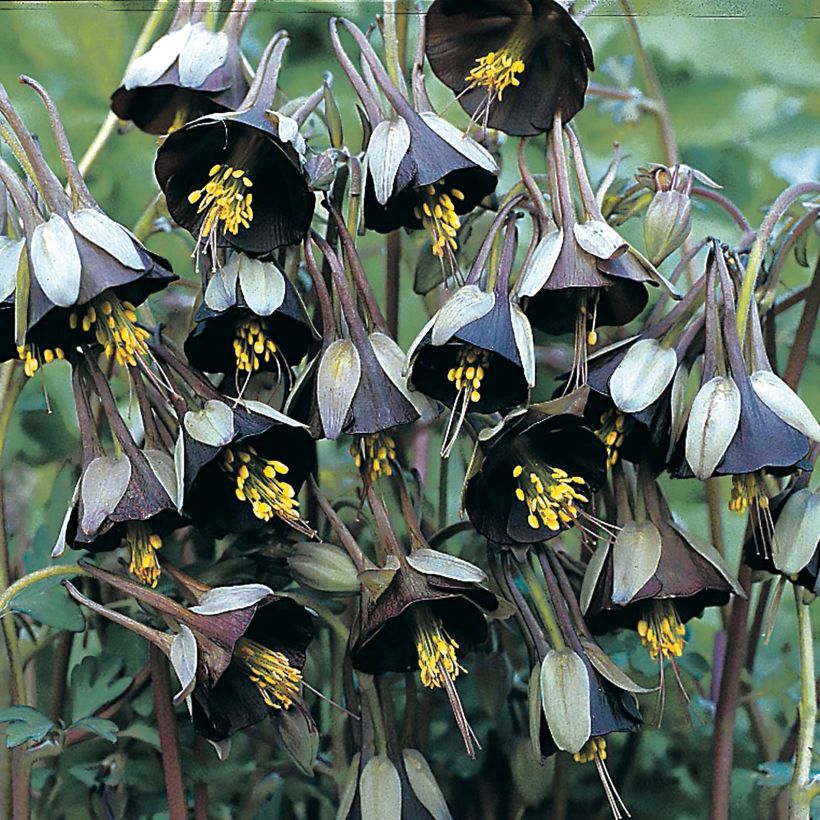

Flowering
Foliage
Plant habit
Botanical data
Aquilegia
viridiflora
Chocolate Soldier
Ranunculaceae
Green-flowered Columbine
Cultivar or hybrid
Other Aquilegia
View all →Planting and care
Aquilegia viridiflora is very hardy and thrives in semi-shade or non- scorching sun. Any ordinary soil, even limestone, suits it as long as it is well-draining but moist, light, and humus-rich. It dislikes heavy, poorly drained soils where it will be shorter-lived. Planting is best done in spring, from March to April, or September. Highly resistant to diseases, it can sometimes be attacked by aphids, leaf miners, and caterpillars and attack by snails and slugs is common on young plants. Columbines easily self-seed in the garden, so leave some flowering stems to produce seeds. Only keep stems of the most vigorous plants as this operation exhausts the plant and reduces its longevity, which is rather short for a perennial, 3 to 4 years. Trim the foliage in summer if it becomes unsightly.
Planting period
Intended location
Care
-
, onOrder confirmed
Reply from on Promesse de fleurs
Similar products
Haven't found what you were looking for?
Hardiness is the lowest winter temperature a plant can endure without suffering serious damage or even dying. However, hardiness is affected by location (a sheltered area, such as a patio), protection (winter cover) and soil type (hardiness is improved by well-drained soil).

Photo Sharing Terms & Conditions
In order to encourage gardeners to interact and share their experiences, Promesse de fleurs offers various media enabling content to be uploaded onto its Site - in particular via the ‘Photo sharing’ module.
The User agrees to refrain from:
- Posting any content that is illegal, prejudicial, insulting, racist, inciteful to hatred, revisionist, contrary to public decency, that infringes on privacy or on the privacy rights of third parties, in particular the publicity rights of persons and goods, intellectual property rights, or the right to privacy.
- Submitting content on behalf of a third party;
- Impersonate the identity of a third party and/or publish any personal information about a third party;
In general, the User undertakes to refrain from any unethical behaviour.
All Content (in particular text, comments, files, images, photos, videos, creative works, etc.), which may be subject to property or intellectual property rights, image or other private rights, shall remain the property of the User, subject to the limited rights granted by the terms of the licence granted by Promesse de fleurs as stated below. Users are at liberty to publish or not to publish such Content on the Site, notably via the ‘Photo Sharing’ facility, and accept that this Content shall be made public and freely accessible, notably on the Internet.
Users further acknowledge, undertake to have ,and guarantee that they hold all necessary rights and permissions to publish such material on the Site, in particular with regard to the legislation in force pertaining to any privacy, property, intellectual property, image, or contractual rights, or rights of any other nature. By publishing such Content on the Site, Users acknowledge accepting full liability as publishers of the Content within the meaning of the law, and grant Promesse de fleurs, free of charge, an inclusive, worldwide licence for the said Content for the entire duration of its publication, including all reproduction, representation, up/downloading, displaying, performing, transmission, and storage rights.
Users also grant permission for their name to be linked to the Content and accept that this link may not always be made available.
By engaging in posting material, Users consent to their Content becoming automatically accessible on the Internet, in particular on other sites and/or blogs and/or web pages of the Promesse de fleurs site, including in particular social pages and the Promesse de fleurs catalogue.
Users may secure the removal of entrusted content free of charge by issuing a simple request via our contact form.
The flowering period indicated on our website applies to countries and regions located in USDA zone 8 (France, the United Kingdom, Ireland, the Netherlands, etc.)
It will vary according to where you live:
- In zones 9 to 10 (Italy, Spain, Greece, etc.), flowering will occur about 2 to 4 weeks earlier.
- In zones 6 to 7 (Germany, Poland, Slovenia, and lower mountainous regions), flowering will be delayed by 2 to 3 weeks.
- In zone 5 (Central Europe, Scandinavia), blooming will be delayed by 3 to 5 weeks.
In temperate climates, pruning of spring-flowering shrubs (forsythia, spireas, etc.) should be done just after flowering.
Pruning of summer-flowering shrubs (Indian Lilac, Perovskia, etc.) can be done in winter or spring.
In cold regions as well as with frost-sensitive plants, avoid pruning too early when severe frosts may still occur.
The planting period indicated on our website applies to countries and regions located in USDA zone 8 (France, United Kingdom, Ireland, Netherlands).
It will vary according to where you live:
- In Mediterranean zones (Marseille, Madrid, Milan, etc.), autumn and winter are the best planting periods.
- In continental zones (Strasbourg, Munich, Vienna, etc.), delay planting by 2 to 3 weeks in spring and bring it forward by 2 to 4 weeks in autumn.
- In mountainous regions (the Alps, Pyrenees, Carpathians, etc.), it is best to plant in late spring (May-June) or late summer (August-September).
The harvesting period indicated on our website applies to countries and regions in USDA zone 8 (France, England, Ireland, the Netherlands).
In colder areas (Scandinavia, Poland, Austria...) fruit and vegetable harvests are likely to be delayed by 3-4 weeks.
In warmer areas (Italy, Spain, Greece, etc.), harvesting will probably take place earlier, depending on weather conditions.
The sowing periods indicated on our website apply to countries and regions within USDA Zone 8 (France, UK, Ireland, Netherlands).
In colder areas (Scandinavia, Poland, Austria...), delay any outdoor sowing by 3-4 weeks, or sow under glass.
In warmer climes (Italy, Spain, Greece, etc.), bring outdoor sowing forward by a few weeks.






























